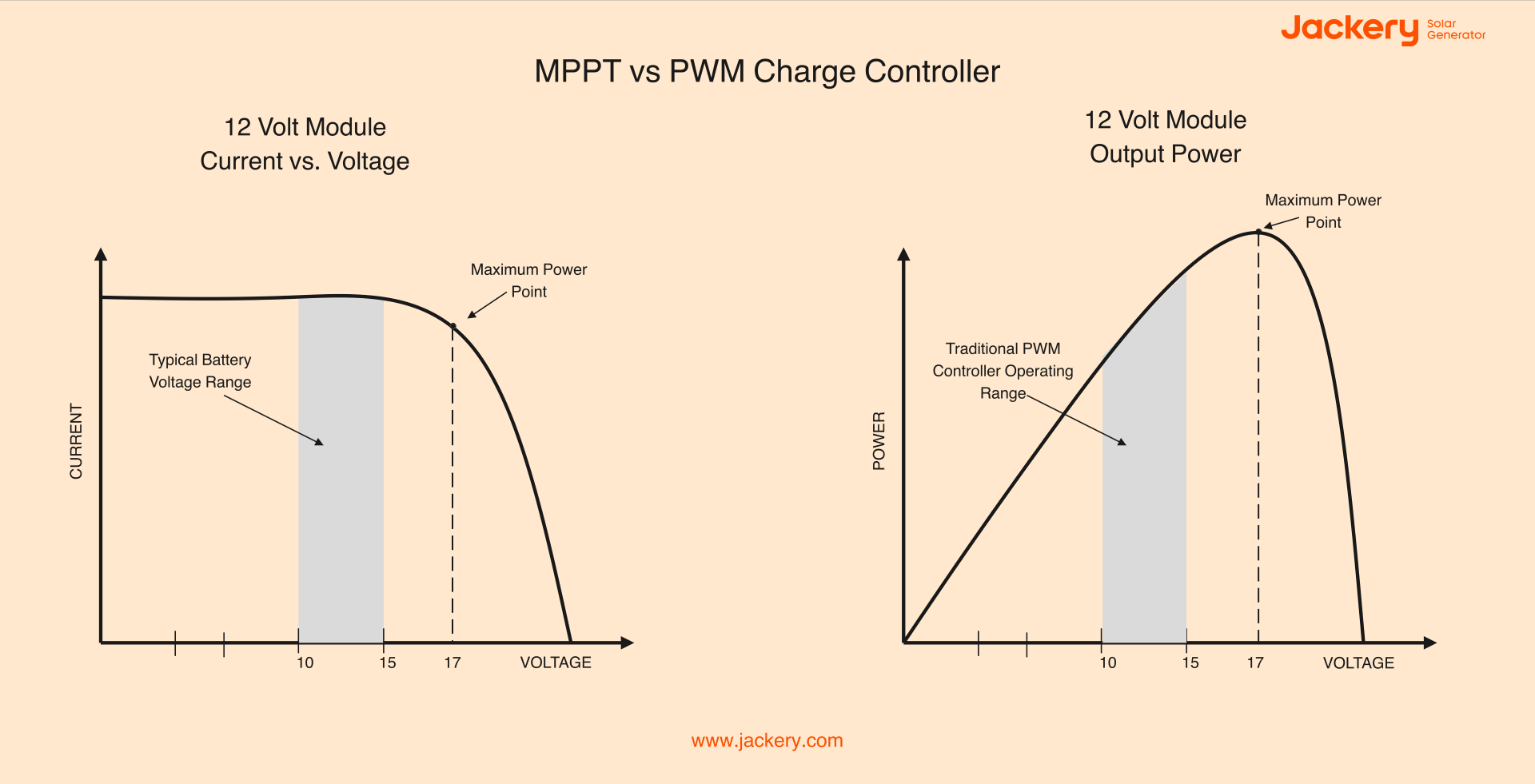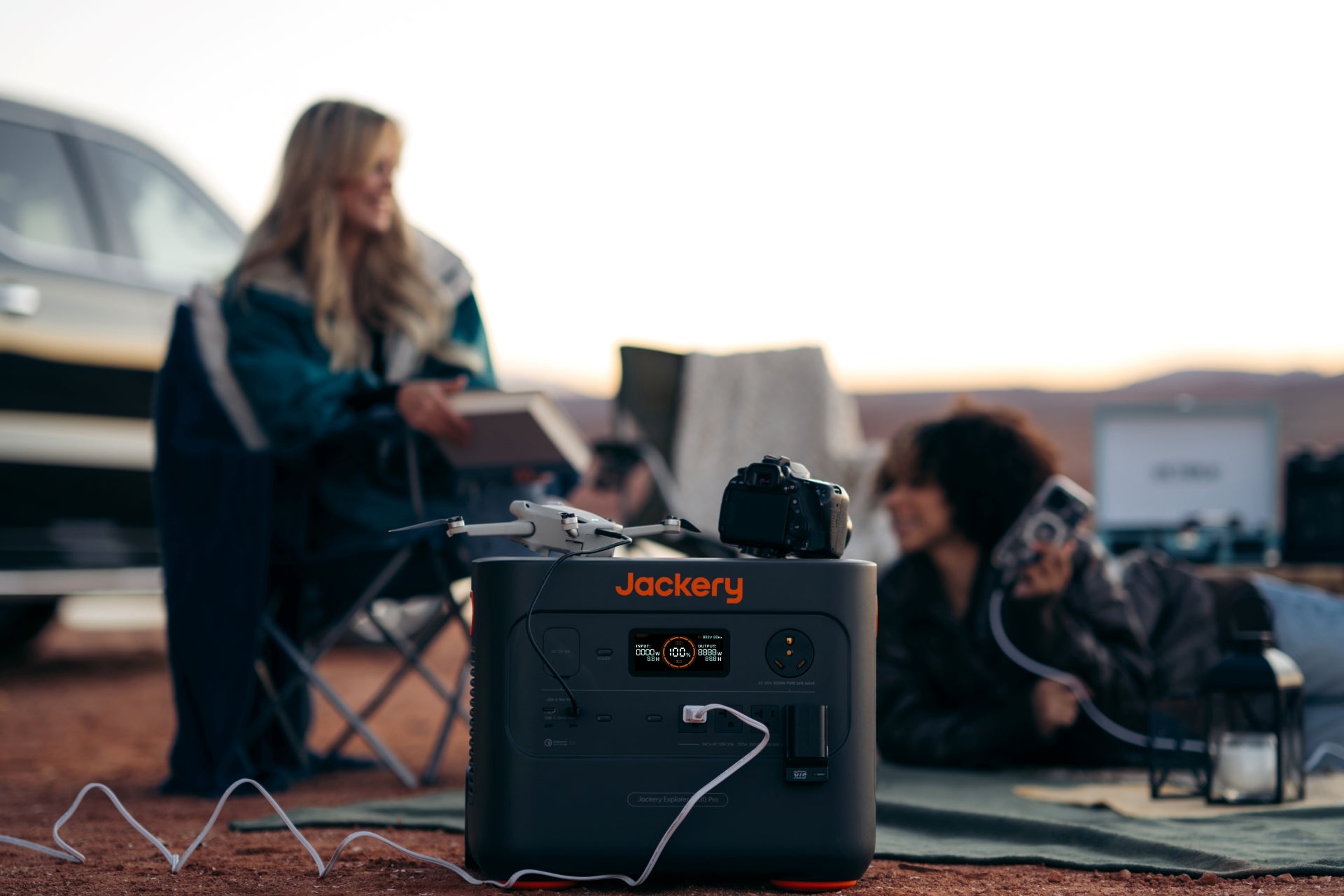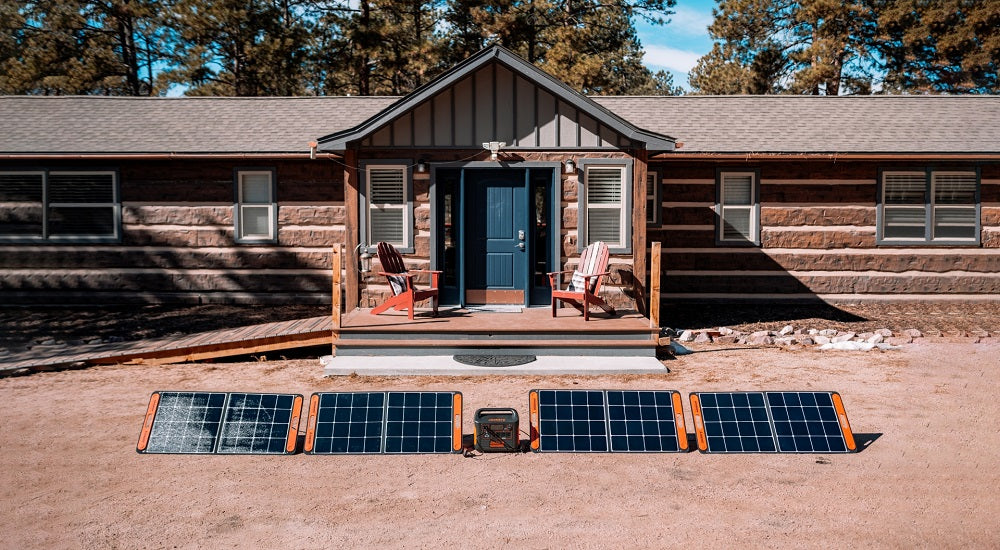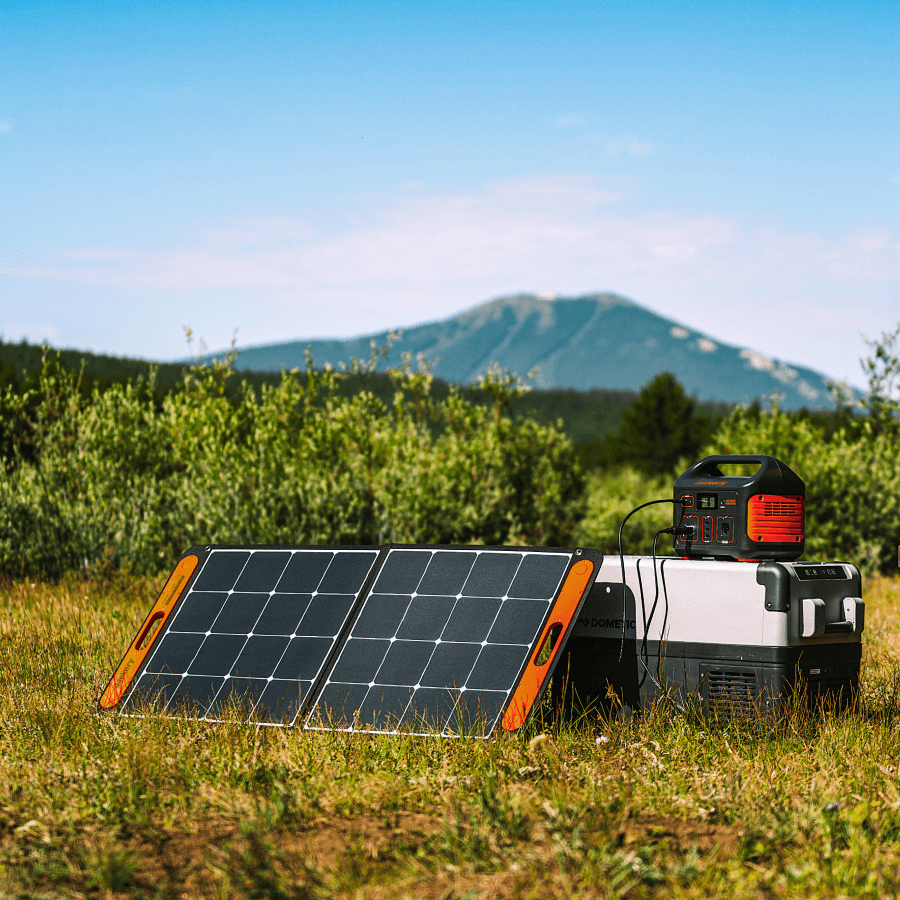If you want to invest in a battery-powered off-grid solar system, you'll need to ensure it has a high-quality and compatible solar charge controller. The primary function of a controller is to regulate the battery and prevent potential damage caused by overcharging. There are two popular types of solar charge controllers: PWM and MPPT.
While PWM charge controllers serve as a more cost-effective option, MPPT charge controllers are constructed using advanced technology and offer higher efficiency. Jackery offers a wide range of Explorer Portable Power Stations featuring an MPPT charge controller to ensure enhanced security during the charging process.
Jackery Explorer 3000 Pro is one of the popular off-grid powering solutions built with a high-quality MPPT charge controller. It can seamlessly power 99% of home or outdoor appliances, making it a reliable choice for diverse energy needs.
What Is An MPPT Charge Controller
Solar power panels collect and convert the sun's energy into electrical energy, which you can store in batteries to charge appliances. However, solar panels produce higher output than your batteries can handle. This is where the role of the solar charge controller MPPT starts.
MPPT solar charge controller monitors the solar panel and determines the maximum power point voltage for the current conditions. But what is an MPPT charge controller? It is a DC-to-DC converter designed for solar power systems. Also known as Maximum Power Point Tracking, its role is to receive voltage from solar panels and convert it for battery charging at appropriate levels.
Here are a few reasons why an MPPT solar charge controller is of utmost importance:
Overload Protection: When solar panels transfer more power than what a battery bank can safely handle, it leads to battery malfunctioning. Solar charge controllers ensure only appropriate current flows to the battery.
Low Voltage Disconnects: The low-voltage disconnect feature of the charge controllers ensure you are not drawing power from the dead battery. Once you've depleted the charge, the charge controller will reconnect the battery to the power source for recharging.
Block Reverse Current: Solar charge controllers work like a valve to create a one-way path for current to travel.
Even though you can purchase an MPPT separately, it's better to choose a solar generator with an in-built solar charge controller. Jackery Explorer Portable Power Stations have high-quality MPPT charge controllers built into their system to safely support the power needs of appliances like ACs, refrigerators, CPAP machines, etc.
How MPPT Charge Controller Works
MPPT solar charge controllers are DC-to-DC converters that transform the voltage and current from the solar power panels to appropriate levels for battery banks. It monitors the solar panel output and battery bank input to adjust the duty cycle.
In simple words, the MPPT controller finds the correct balance between voltage and amperage to efficiently generate maximum power from your solar panel.
MPPT Vs. PWM Charge Controller
PWM (Pulse Width Modulation) controllers are less advanced and cost-effective technology. They function by slowly reducing the current while charging the battery. One important thing to note is that these PWM controllers are suitable only for small systems and may not perform well in low sunlight or in cold temperatures.
Let us take an example of a nominal 12V system to understand better. In this case, the battery voltage will be around 10-15 VDC, and the nominal solar modules will have a Vmp (STC) of about 17V.
Whenever a solar array is connected to the battery for charging, the solar batteries pull down the output voltage. That means instead of operating at the most efficient voltage of 17V, the array operates somewhere between 10 and 15V.
Below is the graphical illustration of the example:

PWM and MPPT are popular solar charge controllers used when charging batteries using solar energy.
While the PWM controllers are generally smaller and operate at battery voltage, MPPT controllers use advanced technology to operate efficiently at the maximum power voltage.
PWM controllers are usually used with solar arrays that match the battery voltage. This eventually limits which modules can be used with these controllers.
For instance, 60-cell modules have a maximum power voltage of about 30V. These solar arrays can be used with MPPT controllers. However, they are less suitable with PWM.
|
PWM Controllers |
MPPT Controllers |
|
The solar array is pulled down to battery volts |
Converts excess input volts into amps |
|
Operate below maximum power voltage (Vmp) |
Operate at maximum power voltage (Vmp) |
|
Generally suitable for smaller module configurations |
Usually ideal for larger module configurations with low cost per wattage |
|
Suitable for hot climates |
Ideal for colder climates or during low battery voltage |
Why MPPT Over PWM Charge Controller
MPPT charge controllers are known to improve the efficiency and performance of solar generators. These highly efficient controllers can convert excess voltage into more amps, leading to 30% more power generation. Below we include a few more reasons why you should choose MPPT over PWM controllers.
Fewer Module Restrictions
MPPT controllers can be used with a wide variety of solar modules and array configurations, all thanks to their ability to operate arrays at voltages greater than the solar battery voltage. Furthermore, these solar charge controllers MPPT support systems with small wire sizes, making them more convenient.
Supports Oversized Arrays
Unlike PWM controllers, MPPT can efficiently support oversized arrays by limiting the array's current intake during the day.
Less Energy Dependent
On cloudy days, the maximum power point keeps changing throughout the day. If the solar system does not operate with the optimal balance, it will be less efficient. The MPPT controller helps your solar system adjust to environmental changes and maintain the best possible output.
High Return on Investment
Even though there is a high upfront cost for an MPPT controller compared to a PWM, you gain much more functionality. When your solar energy system is highly efficient, it helps you reduce energy costs and carbon footprint.
Jackery Portable Power Stations with MPPT Charge Controller
Jackery is a pioneer in manufacturing solar generators, portable power stations, and solar panels. All the Jackery Explorer Portable Power Stations feature a built-in MPPT controller for efficient solar charging. The foldable and lightweight Jackery SolarSaga Solar Panels transform the sun's energy into electrical power, which is then stored in a battery.
Different sizes of portable power stations like Jackery Explorer 3000 Pro, Explorer 2000 Plus, and Explorer 1000 Plus can supply consistent and stable power to most of the essential appliances. Thus, these solar generators are suitable for long camping trips, off-grid living, emergency home backup, etc.
Jackery Explorer 3000 Pro
Jackery Explorer 3000 Pro Portable Power Station features a battery of 3024Wh to power 99% of outdoor appliances. The MPPT technology ensures 99% solar charging efficiency, keeping all your devices charged for long hours. Using 6*Jackery SolarSaga 200W Solar Panels, you can charge the Explorer 3000 Pro in only 2.8 hours.

Jackery Explorer 2000 Plus Portable Power Station
The compact and powerful power station is equipped with a large battery capacity. It integrates an MPPT charge controller, industry-leading BMS, and an advanced smart screen for maximum durability and safety. Using the powerful power station, you can efficiently charge 99% of home or outdoor appliances for long hours.

Jackery Explorer 1000 Plus Portable Power Station
Weighing only 32 lbs and featuring a foldable handle, the Jackery Explorer 1000 Plus is a reliable and robust battery backup for outdoor activities. It has a large battery capacity in a compact design and lets you charge nearly 99% of home or outdoor appliances. It integrates an MPPT solar charge controller for maximum solar recharging efficiency using Jackery SolarSaga Solar Panels.

|
Series |
Capacity |
Charge Controller |
Battery |
Ports |
Appliances |
|
Explorer 3000 Pro |
3024Wh |
MPPT |
NMC |
AC Output (x1): 120V~ 60Hz 25A Max AC Output (x3): 120V~ 60Hz 20A Max USB-C Output (x2): 100W Max, 5V⎓3A, 9V⎓3A, 12V⎓3A, 15V⎓3A, 20V⎓5A Car Port (x1): 12V,10A Max AC Input: 120V, 60Hz, 15A Max DC Input: 2x DC 8mm Ports: 11-17.5V (Working Voltage)⎓8A Max, Double to 8A Max; 17.5-60V (Working Voltage)⎓12A, Double to 24A/1400W Max |
Refrigerator (520W): 4.5H TV (60W): 29.2H Light (5W): 82.7H Microwave (700W): 3.4H Electric Grill (850W): 2.8H Coffee machine (1080W): 2.2H Kettle (850W): 2.8H Portable Air Conditioner (1150W): 2.1H |
|
Explorer 2000 Plus |
2042.8Wh |
MPPT |
LiFePO4 |
AC Output(×4):120V~ 60Hz, 20A Max, AC Output(×1):120V~ 60Hz, 25A Max, AC Total Output,3000W Max, 6000W surge peak USB-A Output(x2): Quick Charge 3.0, 18W Max USB-C Output(x2): 100W Max, (5V, 9V, 12V, 15V, 20V up to 5A) |
Refrigerator (520W): 3.1H TV (60W): 19.7H Light (5W): 55.8H Microwave (700W): 2.3H Electric Grill (850W): 1.9H Coffee machine (1080W): 1.5H Kettle (850W): 1.9H Portable Air Conditioner (1150W): 1.4H
|
|
Jackery Explorer 1000 Plus
|
1264Wh |
MPPT |
LiFePO4 |
AC Output(x3): 120V~60Hz, 2000W (4000W Peak) USB-A Output(x2): 18W Max, 5-5V⎓3A USB-C Output(x2): 100W Max, (5V, 9V, 12V, 15V, 20V up to 5A) Car Port(x1): 12V⎓10A |
Refrigerator (520W): 2.0H TV (60W): 13.5H Light (5W): 45.6H Microwave (700W): 1.5H Electric Grill (850W): 1.2H Coffee machine (1080W): 1.0H Kettle (850W): 1.2H Portable Air Conditioner (1150W): 54 min |
Please note that the actual runtime may vary from that mentioned above and this calculation is for reference purposes only.
MPPT Charge Controller FAQs
How to choose the best MPPT charge controller?
Not all MPPT charge controllers are compatible with your solar array. That's why it's important to analyze a few factors and evaluate its compatibility and performance.
Rated Charge Current: The maximum current the charge controller can charge the battery is called rated charge current.
Battery Voltage: The number refers to the compatible nominal battery voltage and is usually available on the system. Most popular MPPT systems are compatible with 12V and 24V batteries; therefore, they are known as 12/24V.
Maximum PV Voltage: When finding the best MPPT charge controller, always ensure it has a maximum PV voltage greater than the maximum open circuit voltage of the solar array.
Maximum PV Input Power: Charge controls usually have different maximum PV input power ratings for various voltages. It's vital to check the maximum solar array wattage you can connect to your controller for maximum efficiency.
Is the MPPT charge controller worth it?
Yes, an MPPT charge controller quickly gets you a positive ROI by helping you generate solar energy efficiently. The best part about these solar charge controllers is that they provide more power, especially in cold temperatures.
How big of an MPPT charge controller do I need?
The formula to calculate the size of an MPPT charge controller is multiplying the number of panels and the wattage of each solar power panel. This will give watts (or kilowatts) of your solar array. You can divide the number with your battery bank voltage to get amps. Lastly, add 25% of the number if you live in a colder climate.
If you are confused about which MPPT charge controller suits your solar system, consider purchasing Jackery Explorer Portable Power Stations. These battery backups have an in-built MPPT controller and can efficiently operate to charge all your appliances. You can connect these battery backups for homes or outdoor adventures with Jackery SolarSaga Solar Panels for efficient charging.
Final Thoughts
Investing in a solar generator system with an MPPT controller for your home can not only help you reduce the cost of your high electricity bills but also positively impacts the environment. However, choosing the compatible MPPT charge controller for your solar array can be arduous for many users.
Jackery Explorer Portable Power Stations feature MPPT solar charge controllers. The advanced MPPT technology ensures a high solar charging efficiency, so you no longer have to worry about power outages or blackouts. These power stations are also portable, making them a great companion for outdoor adventures.






















































































































Leave a comment